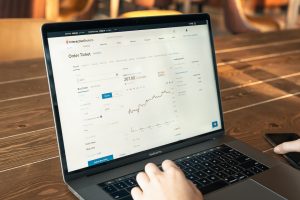Forex trading is the process of buying and selling currencies with the aim of making a profit. Unlike stocks, Forex trading operates 24 hours a day, five days a week, which presents opportunities for traders to make money at any time. However, the key to successful Forex trading is buying at the right time. In this article, we will discuss how to buy in the exact time in Forex trading.
Firstly, it is important to have a trading plan. A trading plan outlines your trading style, risk management strategy, and trading goals. It helps you to make informed decisions and avoid impulsive trades. When creating a trading plan, consider the following factors:
– Trading style: Are you a day trader, swing trader or position trader? Day traders hold trades for a few hours and aim to make quick profits. Swing traders hold trades for a few days to a week and aim to profit from short-term price movements. Position traders hold trades for weeks or months and aim to profit from long-term price movements.
– Risk management strategy: How much are you willing to risk per trade? What is your stop-loss and take-profit strategy? A stop-loss is a predetermined price at which you will exit a trade to prevent further losses. A take-profit is a predetermined price at which you will exit a trade to lock in profits.
– Trading goals: How much profit do you want to make? What is your timeframe for achieving your goals?
Once you have a trading plan, you can use technical analysis to determine the best time to buy. Technical analysis involves studying price charts to identify patterns and trends. There are several technical indicators that traders use to make trading decisions, including:
– Moving averages: A moving average is the average price of a currency pair over a specific period. A simple moving average (SMA) is calculated by adding the closing prices of a currency pair over a specific period and dividing by the number of periods. A popular SMA is the 200-day moving average, which is used to identify long-term trends. When the price is above the 200-day moving average, it is considered a bullish signal, and when it is below, it is considered a bearish signal.
– Relative Strength Index (RSI): The RSI is a momentum indicator that measures the strength of a currency pair. It ranges from 0 to 100, with a reading above 70 indicating an overbought condition and a reading below 30 indicating an oversold condition. Traders use the RSI to identify potential price reversals.
– Bollinger Bands: Bollinger Bands are a volatility indicator that consists of three lines. The middle line is a moving average, and the upper and lower bands are two standard deviations away from the moving average. When the price is near the upper band, it is considered overbought, and when it is near the lower band, it is considered oversold. Traders use Bollinger Bands to identify potential price reversals.
In addition to technical analysis, traders also use fundamental analysis to determine the best time to buy. Fundamental analysis involves analyzing economic and political events that affect the currency market. Some of the key economic indicators that traders look out for include:
– Gross Domestic Product (GDP): GDP is a measure of a country’s economic output. A strong GDP indicates a healthy economy and can lead to a stronger currency.
– Interest rates: Central banks use interest rates to control inflation and stimulate economic growth. An increase in interest rates can lead to a stronger currency, while a decrease can lead to a weaker currency.
– Inflation: Inflation is the rate at which prices of goods and services increase. High inflation can lead to a weaker currency, while low inflation can lead to a stronger currency.
In conclusion, buying in the exact time in Forex trading requires a combination of technical and fundamental analysis. Traders need to have a trading plan that outlines their trading style, risk management strategy, and trading goals. They also need to use technical indicators such as moving averages, RSI, and Bollinger Bands to identify potential price reversals. Additionally, they need to analyze economic and political events that affect the currency market using fundamental analysis. By using a combination of these strategies, traders can identify the best time to buy and make profitable trades.





